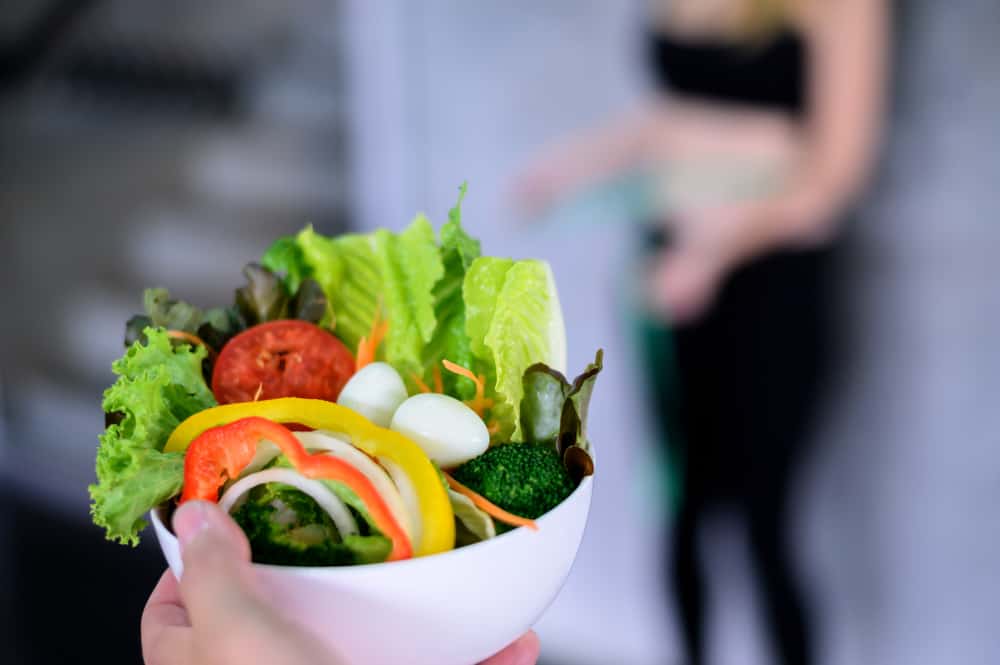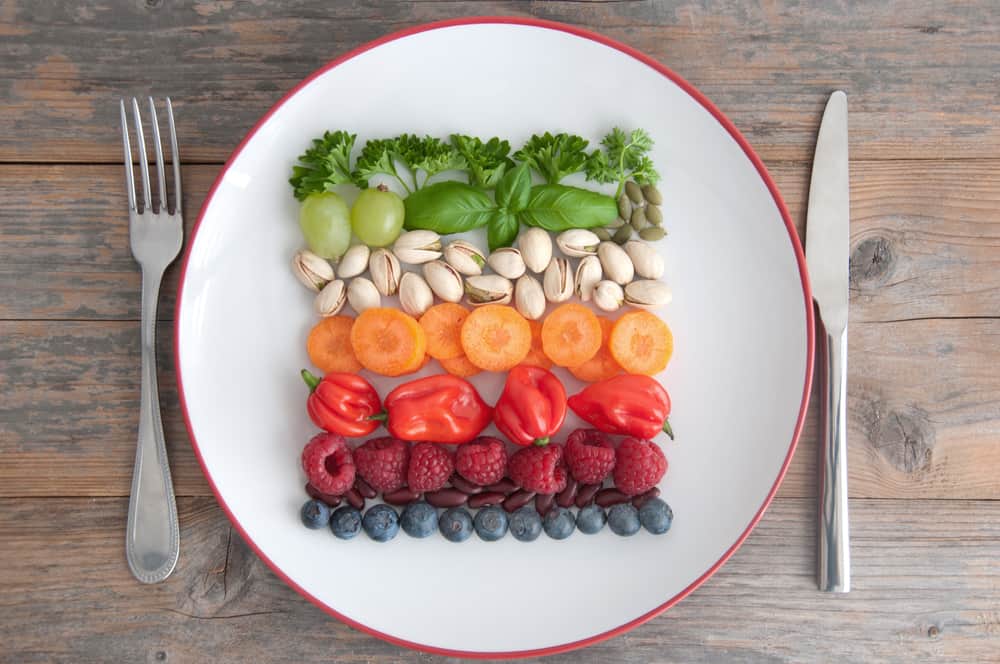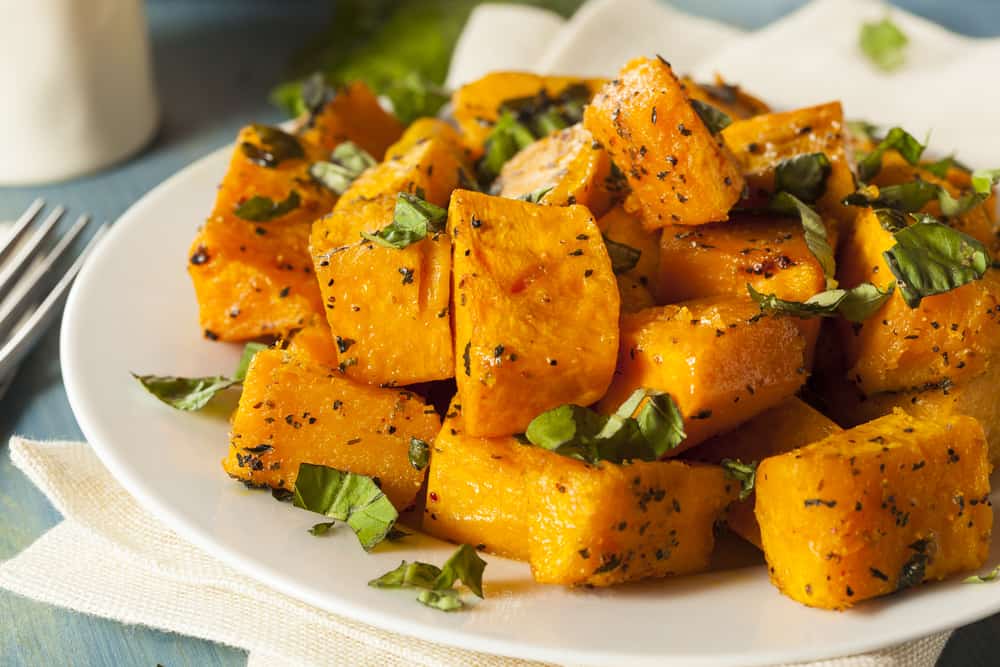Complete Guide to the Ketotarian Diet
A ketotarian diet is a new take on a classic plan. A ketogenic diet, or keto for short, has existed for centuries. In fact, healers as far back as 500 BC recorded that it provided many health benefits, including anti-inflammatory properties. In the 1920s Russell Wilder, a doctor at the Mayo Clinic began experimenting with and refining a fat-centric diet that simulated fasting’s effects on the body. Now, keto diets have become one of the most popular diets in the United States.
A keto diet is a low-carb, high-fat, and moderate protein eating plan. The goal of a ketogenic diet is for the body to reach ketosis or fat-burning mode. Ketosis occurs when your body lacks enough carbohydrates to use as energy. Typically, those who follow a ketogenic diet will eat large quantities of meat and dairy products.
Recent studies have demonstrated that the eating plan provides several benefits. One study showed that a four-week keto diet improves skeletal muscle aerobic capacity in male rats. Other studies with humans have shown that a keto diet helps in heart and gut health, weight loss, and eliminating inflammation.
What is the Ketotarian Diet?
A ketotarian diet is a ketogenic diet that has been modified for vegetarians so that it does not include beef, pork, chicken, lamb, or cheese. It is based on plant-based foods, although a true ketotarian diet also includes eggs, fish, and shellfish. Eating these animal-based proteins is optional, however.
A ketotarian diet restricts carbohydrates to about five percent of an individual’s calories, which, for most people, is 25 grams of net carbs. Net carbs are determined by subtracting total carb grams minus fiber grams. About 70 percent to 75 percent of calories in the keto diet come from fat. The remainder of calories, 20 percent to 25 percent, come from protein. For a ketotarian, this protein will come primarily from plant-centric sources. For a vegan ketotarian, the diet will be totally plant-based.
On Noom, you are taught how to eat a balanced diet of foods with just the right calorie density to keep you fuller, longer. You don’t have to eliminate any foods from your life. Check out the free trial offer today!
Who Developed the Ketotarian Diet?
Dr. Will Cole, a chiropractor and functional medicine specialist developed and popularized the ketotarian diet in his book, Ketotarian: The (Mostly) Plant-Based Plan to Burn Fat, Boost Your Energy, Crush Your Cravings, and Calm Inflammation.” He maintains that reaching ketosis is possible without eating heavy cream, cheese, or fatty meat cuts.
Cole, who specializes in customizing health programs for individuals, created the diet because many people who became vegetarians did so by loading up on carbs, which can lead to weight gain, nutritional deficiencies, and inflammation. His ketotarian diet provided an alternative for vegetarians, pescatarians, and others who primarily eat plant-centric foods.
Benefits of a Ketotarian Diet
A ketotarian diet is keto gone vegetarian and, as such, will combine the benefits of a ketogenic diet and a vegetarian diet. These benefits include weight control, blood sugar management, cardiovascular health, and no reduction in resting metabolic rate despite weight loss. Ketosis also has been found to benefit gut health and brain and nervous system health. These benefits are supported by several studies of the ketogenic diet, ketotarian diet, and vegetarian and vegan diets.
Ketogenic Diet and Weight Loss
A randomized clinical study in 2012 published in the British Journal of Nutrition showed that individuals randomly assigned to a group following a low-carb keto diet showed significant decreases in body weight and diastolic blood pressure over the long-term. A low-carb diet was defined as no more than 50 grams of carbohydrates a day. The study randomly placed participants in two groups — those who followed the low-carb keto diet and those who followed a low-fat diet, defined by having no more than 30 percent fat. The study followed participants for 12 months and demonstrated that those on the keto diet were more successful in controlling obesity and blood pressure. It concluded that keto diets are an effective tool in controlling obesity.
Similar results were discovered in a study published in 2017. This study, conducted jointly by seven U.S.-based institutions, compared weight loss and glycemic control between overweight participants who followed a ketogenic diet and online lifestyle program and those who followed a more conventional diet program, known as Create Your Plate. For this study, overweight individuals were defined as adults with a body mass index greater than 25. Participants were recruited online and through radio and newspaper advertisements throughout the United States. As a criterion for participation, all indicated a willingness and desire to change their eating habits. Participants were randomly placed in either the ketogenic diet program or the conventional program.
After 32 weeks, the study showed that 90 percent of those following the ketogenic diet had lost weight, while only 29 percent of those in the other group had done so. Those who undertook the ketogenic diet also had better success in controlling their sugar levels.
A ketogenic diet also can suppress your appetite. A 2015 study in Obesity Reviews conducted a literature review and analyzed studies assessing appetite while the body is in ketosis. A visual analogue scale, which measures attitudes across a continuum, was used to assess appetite.
The study determined that those who adhered to a ketogenic diet were less hungry and had less desire to eat. Those who were in a group that had followed a different type of diet, known as a low energy diet, on the other hand, felt fuller but didn’t necessarily have less desire to eat.
Finally, a 2018 study examined whether those who lost weight through being in ketosis maintained the same resting metabolic rate they had before weight loss. This was important to determine because the effects of dieting often cause your metabolic rate to slow down. This causes plateaus in weight loss and the regaining of the lost weight within a short period.
The study examined twenty obese patients in Spain who had each lost about 45 pounds on a low-calorie ketogenic diet. To qualify for the study, patients were between ages 18 to 65, medically obese, who had maintained a stable weight for the three months before the study began. Apart from being obese, the patients were otherwise healthy. The study found that these patients did not reduce resting metabolic rate that typically accompanies a rapid weight loss. Scientists conducting the study believed this was explained by their ability to maintain their lean muscle mass.
There’s little doubt that a keto diet can help you lose weight. The trouble is often with keeping the weight off. That’s where a comprehensive plan like Noom stands out. You’re taught how to live in a way that naturally promotes weight loss so it becomes part of your life, not just another diet. You can give it a try with a free trial offer today!
Vegetarian Diet and Weight Loss
Vegetarian and vegan diets also are associated with weight loss.
A 2016 study published in the Journal of General Internal Medicine demonstrated a strong link between vegetarian and vegan diets and moderate weight loss among obese people. That study featured 1,151 individuals who were either randomly assigned to a vegetarian group, vegan, or to one of 12 randomized control trials that used other popular weight-loss diets such as the Atkins Diet and Weight Watchers. At the end of the 18 weeks, those who followed the vegetarian diets experienced significantly more weight loss than those who were in any of the control groups. Those who followed vegan diets lost more weight than either the vegetarian group or the control groups. Participants in the vegan and vegetarian groups also experienced a reduction in blood pressure.
A 24-month study also assessed how well two groups maintained their weight loss. It compared someone following a vegan plan and someone who was following a moderately low-fat diet (from the National Cholesterol Education Program). That study showed that those on the vegan diet lost 4.9 kg vs. those on the low-fat diet who lost 1.8 kg at the end of one year. During the two-year period, those on the vegan diet had lost 3.1 kg vs. those on the low-fat diet who had lost 0.8 kg. Adherence rates were similar between the two diets.
Keto and Your Health
Ketogenic Diet and Neurological Health
Ketosis produces ketone bodies, which are neuroprotective and have anti-inflammatory qualities, according to a study conducted in 2017. That same study also found that the restriction of proteins that takes place in a strict ketogenic diet also enhances the production of the endocrine signal fibroblast growth factor 21 (FGF21) in the liver, which, in turn, reduces blood sugar levels.
Ketotarian Diet and Gut Health
The ketotarian diet is rich in fermented foods or those foods that have undergone controlled microbial growth and fermentation. Fermentation is an anaerobic process in which microorganisms like yeast and bacteria break down food components into other products. Examples of fermented foods that the ketotarian diet favors are tempeh, sauerkraut, and kimchi.
Probiotics occur in some fermented foods, and probiotics found in fermented foods promote gut health. Our guts control many aspects of our health, including mood, behavior, weight gain, and food craving. Most of our immune system also resides in the gut and tonsils; imbalanced gut health is detrimental to the immune system, while balanced gut health strengthens the immune system. In addition, the high fiber content of many keto-friendly foods also helps prevent constipation and the symptoms associated with it.
Ketotarian Diet and Heart Health
A study published in 2017 in the Journal of American College of Cardiology supported the finding that plant-based diets generally improved overall heart health. However, the study also found that not all plant-based foods were necessarily themselves heart healthy.
The study included 82,949 women and 43,259 men and examined associations between plant-based diet indices and instances of heart problems. The study created indices where healthy plant-based foods such as nuts and legumes, whole grains, fruits and vegetables, and tea and coffee received positive scores. In contrast, unhealthy plant-centric foods such as sweetened beverages, sweets, refined grains, and potatoes and fries received negative scores.
Over the long term, the study determined that a plant-based diet that emphasizes unhealthy foods resulted in more cases of heart issues. In comparison, the diet of healthy plant-based foods resulted in fewer cases. The plant-based foods that the study listed as healthy, such as nuts and many fruits and vegetables, make up a large portion of a ketotarian diet.
Ketotarian Diet and Omega 3 Fatty Acids
Omega 3 fatty acids provide various benefits to the body, including lowering inflammation. Omega 3 fatty acids are found in fatty fish, such as salmon, mackerel, and herring. Fish also are significant in a traditional ketotarian diet as a major source of protein.
Ketotarian Diet and Anthocyanidins
A ketotarian diet includes a variety of fruits and vegetables of all colors. These vegetables and fruits are the colors they are because of anthocyanidins, which are colored water-soluble pigments. Berries and red to purplish colored leafy vegetables contain high concentrations of anthocyanidins. These anthocyanidins have a number of health benefits and are sometimes used in nutraceuticals and pharmaceuticals.
Studies also have shown that anthocyanidins improve the lipid profile and platelet function in healthy adult volunteers and the lipid profile in obese rats, enabling them to control their weight better. Lipids are a group of fats and fat-like substances; lipid profiles measure the level of specific lipids, including cholesterol and triglycerides. Having a healthy lipid profile is key to a healthy heart.
The study also showed that the anthocyanidins could improve immune system function and vision, which takes place through improved ocular blood flows and function.
Downsides of a Ketotarian Diet
Although a ketotarian diet indeed provides a host of benefits, the eating plan is not for everyone. Some people will find it to be too restrictive for them and, in the long run, may be better off choosing a less restrictive healthy diet that they can stick to. To follow a ketotarian diet correctly, you’ll have to plan carefully, and your eating out options will be more limited. Compared with less restrictive diets, it also may be more expensive.
Also, as with any plan, you will want to check with your healthcare provider before you begin. You may experience an adjustment time as your body becomes accustomed to its new way of eating. Easing into the new plan will help avoid any adjustment challenges.
If your goal is weight loss, remember that weight loss ultimately happens when you eat fewer calories than you burn through activity.
What Foods Are Encouraged on the Ketotarian Diet?
A keto diet is all about maintaining ketosis, so the foods you eat will be designed to keep you in ketosis. The diet also stresses getting most of your calories from fat. Because a ketotarian diet lacks fatty meats, you’ll get at least some of your protein grams from nuts or nut products such as nut oils and nut milk to meet your fat calorie goal. Specifically, a ketotarian diet encourages eating these foods:
- Low-fructose fruits: blueberries, blackberries, raspberries, watermelon, and cantaloupe. Strawberries, which are sweeter than other berries, are encouraged in moderation.
- Non-starchy vegetables such as Brussels sprouts, broccoli, cauliflower, zucchini, cabbage, summer squash, avocados, green beans, lettuces, asparagus, and mushrooms
- Unsweetened nut milk
- Proteins such as nuts, hemp seeds, flax seeds, chia seeds, eggs, fish and shellfish, natto, tempeh, peas, hemp protein powder, spirulina
- Fats such as nut butters, olive oil, coconut oil, avocado oil
What Foods Are Discouraged on the Ketotarian Diet?
Because it is a combination of ketogenic and vegetarian, a ketotarian diet eliminates meat, except seafood, and eliminates dairy. It also eliminates those fruits and vegetables that take your body out of ketosis. And, of course, it limits foods high in net carbohydrates. Specifically, those on a ketotarian diet are discouraged from eating:
- Starchy vegetables such as sweet potatoes and corn
- Carbs such as bread, crackers, pasta, rice, cakes, pastries, cookies, chips, and ice cream
- Fruits such as bananas, apples, oranges, cherries, pineapple, and mangoes
- Nightshades, or those vegetables belonging to the family of plants known as Solanaceae. These include tomatoes, peppers, white potatoes, eggplant, and contain alkaloids.
- Dairy products such as cow’s milk, yogurt, and cheese
- Proteins such as beef, pork, chicken
- Fats such as lard and bacon fat
There are no prohibited foods on Noom. The combination of your personal coach and daily lessons will teach you how to live life making healthier food choices, healthier life choices and losing weight. There’s nothing to lose with the free trial offer available to Dietspotlight readers today!
Ketotarian Diet for Vegans
Vegans eat no animal products. A ketotarian diet can be modified for vegans by eliminating the eggs, fish, and shellfish. A vegan following the ketotarian diet will need to be careful to obtain enough protein from plant-centric foods such as nuts, seeds, lentils, and tempeh. Consulting a nutritionist, healthcare provider, or dietitian can help you reach ketosis on a vegan diet.
Ketotarian Diet Recipes
If you decide you’d like to try going ketotarian, you may want to take a look at how some traditionally keto recipes could be transformed into a ketotarian delight. Here are a few recipes to get you going in the kitchen.
Tuna & Cheese Balls
Modified from a keto ham and cheese bite recipe, this quick fix is perfect for a low-carb snack.
Ingredients:
- 2 cups tuna, dried on paper towels
- 4 ounces softened plant-based cream cheese
- ¼ cup to ⅓ cup low-carb flour, coconut or almond flour work well
- ½ teaspoon baking powder
- 1 ½ cup plant-based shredded cheese, extra sharp or cheddar are good choices
- 3 eggs
Directions:
- Set your oven to 350 degrees to preheat.
- Start off by ensuring the tuna is as dry as possible. We don’t want a bunch of added moisture from the fish.
- Mix together the tuna and cream cheese.
- In a small bowl, crack the eggs and beat well.
- Add the eggs and remaining ingredients to the tuna and cream cheese mixture.
- Mix well then chill for at least 10 minutes, longer if possible.
- After chilling, roll the mixture into balls and place on a greased baking sheet. You should be able to get about 24 balls out of the mixture.
- Bake for 20 to 25 minutes, or until browned.
Skillet Green Beans
To add a little pizazz to your dinner plate, why not try adding these amazing skillet green beans. Green beans supply fewer than 4 carbs per one-cup serving, so enjoy!
Ingredients:
- 1 pound fresh green beans, ends trimmed. When choosing your green beans, pick as many straight beans as possible. This makes for a better looking presentation when served.
- 2 roma tomatoes, seeds removed and diced
- ¼ cup minced shallots
- 2 cloves garlic, minced
- 3 tablespoons olive oil
- 2 tablespoons water
- 2 bay leaves
- 1 teaspoon vegetable base
- ½ teaspoon dried oregano
- Salt and pepper
Directions:
- Wash your green beans well and drain.
- Heat 1 tablespoon of olive oil over medium heat. When the pan is hot, add onions and garlic. Saute for two to three minutes.
- Add the tomatoes and bay leaf and continue to cook just until the onion starts to get soft.
- Throw in the vegetable base and water, one more tablespoon of oil and the seasonings. Mix.
- Toss the green beans into the pot and stir.
- Cover the pot with a lid and allow to cook for four to five minutes.
- Remove from heat and add salt and pepper, as needed.
Ketotarian Chili
Chili can be as complicated or as simple as you’d like to make it. This recipe calls for some spice to kick things up a notch, taking it to the next level. Feel free to make changes you see fit to create your own special chili recipe.
Ingredients:
- 1 can black beans, rinsed and drained
- 1 pound portabella mushrooms, chopped
- 1 pound button mushrooms, chopped
- 1 small onion, diced
- 2 cloves garlic, minced
- 1 to 2 tablespoons tomato paste
- 1 to 2 tablespoons vegetable base
- 1 to 2 jalapenos, diced with seeds removed (if desired to lower heat value)
- 2 cups vegetable broth
- 2 teaspoons apple cider vinegar
- 2 to 4 tablespoons olive oil
- 1 to 2 tablespoons paprika
- 1 to 2 tablespoons chili powder, more to taste if needed
- 1 to 2 teaspoons low-carb sweetener
- Red pepper flakes to taste
- Salt and pepper to taste
Directions:
- Heat oil in a large stock pot over medium heat.
- Add onions and garlic to the pot.
- Stir well and saute for a few minutes, or until they start to slightly brown.
- Add chopped mushrooms, and saute for another five to 10 minutes, or until the mushrooms are slightly broken down and browning. Browning is critical to this recipe because it imparts huge flavor that would normally come from the meat.
- In a separate bowl, add the vegetable broth, vegetable base, sweetener and apple cider vinegar. Mix well.
- Pour the liquid into the large stock pot, add beans and spices.
- Allow to simmer for 20 to 25 minutes, or until everything comes together.
- Taste and adjust seasoning, as needed.
Buffalo Cauliflower
This recipe for buffalo cauliflower is as easy as it gets. You won’t get the crunchy outer covering you would with traditional wings, because this low-carb recipe doesn’t add flour for coating. However, you still get all the taste and then some.
Ingredients:
- 1 large head of cauliflower, rinsed with florets removed
- ½ cup to 1 cup low-carb buffalo sauce
- 1 tablespoon olive oil or plant-based butter
- Garlic powder
- Red pepper flakes
- Salt and pepper to taste
- Parsley
Directions:
- Throw all ingredients into a large bowl and toss to mix thoroughly.
- Bake the coated cauliflower on a lined baking sheet at 450 degrees for 20 to 25 minutes, or air fry until golden brown.
- Serve with a low-carb, ketotarian sauce of your choice and lots of celery.
Grilled Garlic Salmon
Salmon is one of the healthiest fish you can consume. It is packed with omega fatty acids that fight free radical damage. Free radicals can damage healthy cells in nanoseconds.
Ingredients:
- 3 tablespoons of plant-based butter, separated
- 3 tablespoons olive oil, separated
- 4 salmon filets (4 ounces each)
- Zest of one lime
- Juice from one lime
- 2 cloves garlic, minced
- Dried thyme
- Salt and pepper to taste
Directions:
- Melt a single tablespoon of plant-based butter and olive oil in a large skillet over medium heat.
- Season salmon with salt, pepper and dried thyme.
- Add to the skillet and cook on one side for five minutes.
- Flip and cook for another five minutes before removing to a plate., Set aside.
- In the skillet, add the remaining plant-based butter and olive oil. Throw in the lime juice and zest with the garlic. Add more dried thyme, salt and pepper if desired.
- Once the garlic softens, pour over the salmon filets and serve.
Roasted Butternut Squash with Bacon
Yes, you can have bacon on a ketotarian diet, if you don’t mind going with some imitation flavoring for this recipe. The bacon bits taste slightly different than traditional bacon, but they take this roasted squash recipe to a whole new level.
Ingredients:
- 4-5 cups butternut squash, cut in 1-inch chunks (about a 2 or 2 ½ pound squash)
- 2 tablespoons olive oil
- 2 tablespoons plant-based butter, melted
- 2 garlic cloves, minced
- 2 tablespoons dried thyme
- 2 tablespoons red pepper flakes
- 1 teaspoon onion powder
- ½ to 1 cup imitation bacon bits, low-carb or carb-free
- Salt and pepper to taste
Directions:
- Preheat the oven to 425 degrees.
- In a large bowl, combine all ingredients and toss to coat well.
- Pour onto a greased baking sheet.
- Bake for 30 to 35 minutes, turning once or twice during baking.
- Remove from the oven and allow to cool slightly before serving.
Jamaican Jerk Mushrooms
This time around we’re focusing on the jerk portion of the recipe. To make the best grilled jerk mushrooms, you need to have the best jerk seasoning, so let’s get to it.
Jerk Seasoning Ingredients:
- 1 tablespoon each of onion powder, garlic powder, brown-sugar substitute or Splenda, dried parsley
- 2 teaspoons each of cayenne pepper, paprika, salt
- 1 teaspoon each of allspice, ground black pepper, dried thyme
- ½ teaspoon each of red pepper flakes, ground cumin, ground nutmeg, ground cinnamon
Other Ingredients:
- 6 to 8 portabella mushroom caps, washed and dried well
- 2 tablespoons olive oil
Directions:
- Preheat the oven to 450 degrees.
- Line a baking sheet with aluminum foil.
- Place mushroom caps, top side up, on the baking sheet.
- Drizzle 1 tablespoon of olive oil over the top of the caps.
- Sprinkle the mushrooms liberally with jerk seasoning. Rub the seasoning all over the caps to ensure complete coverage.
- Flip the mushrooms and repeat.
- Flip back and bake for 15 to 25 minutes, or until desired brownness is achieved. Flip once during baking.
- If desired, turn on the broiler for the last couple minutes of cooking to create a crispier texture and depth of flavor.
Ketotarian Shopping List
As you’ve no doubt noticed, a ketotarian shopping list would be devoid of bread, red meat, pork, chicken, potatoes, dairy products, and sweets.
Before you shop, plan your menus for the week. Breakfast options might include eggs and omelets (unless you’re a vegan), the ketotarian pancakes above, low-fructose fruit and nuts, smoked salmon, and leafy greens, the keto overnight oats, above, or vegan yogurt, for example.
Lunch options might include a plate of roasted vegetables, the lentil-filled lettuce wrap recipe above, or tuna over leafy greens with pumpkin or sunflower seeds.
Dinners, for example, might include the stir-fry over cauliflower rice listed above, fish fillets with leafy vegetables, grilled shrimp with vegetables, or the coconut shrimp dish above.
You might also want to have some keto-friendly snacks on hand, such as nut butters, olives, hard-boiled eggs, vegan yogurt, or canned fish.
Based upon your meal planning, a one-week grocery list would include:
Several vegetable options from among the following:
Green leafy vegetables:
- Brussels sprouts
- Broccoli
- Cabbage
- Dark leafy greens
- Kale
- Spinach
- Salad greens
Other vegetables:
- Artichokes
- Asparagus
- Avocado
- Cauliflower
- Green beans
- Mushrooms
- Olives
- Peas
- Peppers
- Summer squash
- Zucchini
Several fruits from among the following:
Berries:
- Blueberries
- Blackberries
- Raspberries
- Strawberries
Other fruits:
- Coconut
- Cantaloupe
- Lemons
- Limes
Plant-based fats
- Nuts and nut butters
- Seeds: chia, sesame, hemp, and others
- Avocado oil
- Coconut oil
- Coconut butter
- Olive oil
- Sesame oil
Dairy substitutes:
- Non-dairy cheese
- Non-dairy yogurt
- Unsweetened nut milk
Fermented foods:
- Sauerkraut
- Kefir
- Kombucha
- Kimchi
Other Protein Sources
- Eggs (optional)
- Fish – fresh, smoked, and/or canned (optional)
- Natto
- Nutritional yeast
- Shrimp (optional)
- Spirulina
- Tempeh
- Tofu
Scientific research has proven that a ketotarian diet can benefit many of your body’s systems. However, all individuals are different; we have different metabolisms, health challenges, and goals. As with any eating plan, check with a healthcare professional before you try a ketotarian diet to be sure it’s the right eating plan for you.
Our top pick for the best weight loss program available today is Noom. Each user gains access to a group coach, personal coach, daily lessons, quizzes, goal-setting exercises and so much more. All in an easy-to-use app that’s been clinically proven effective. Give it a go with the free trial offer right now!
Complete Guide to the Ketotarian Diet Questions & Answers
- Recent:
To start a Ketotarian diet, you will need to focus on eating whole foods that are high in healthy fats and proteins. Eat plenty of leafy greens, non-starchy vegetables, nuts, seeds and legumes. Also include some fruits (such as berries), dairy products if desired and some lean proteins such as chicken and fish. Enjoy healthy fats like olive oil and coconut oil, but be sure to limit your intake of processed oils like canola or vegetable oils. You should also eliminate all grains and other starch-based foods from your diet. Finally, make sure to drink plenty of water throughout the day to stay hydrated and support your body’s metabolic processes.

Summer Banks has researched over 5000 weight-loss programs, pills, shakes and diet plans. Previously, she managed 15 supplement brands, worked with professionals in the weight loss industry and completed coursework in nutrition at Stanford University.




